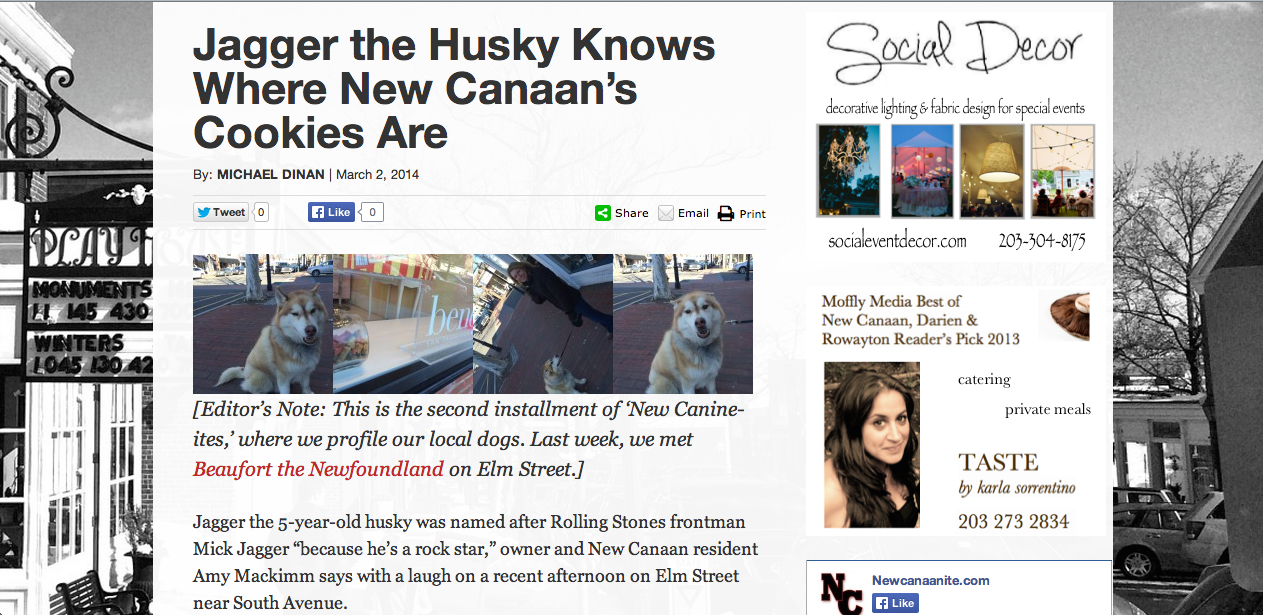In the last several years, hundreds of journalists took a risk and went to work for a big company that said it could deliver hyperlocal news online across the country.
That company was Patch.
Today, many of the jobs it once offered are gone.
But what it left behind was a group of highly trained digital editors, a handful of them with aspirations higher than moving on to another media company on shaky ground.
These editors have left Patch and started their own local news ventures, or joined a fresh crop of hyperlocal startups started by others in communities around the country.
Determined to learn from the mistakes made by Patch, they are doing local news on their own terms.
As they tell it, this means no more directives from an office in New York City about how to cover local news in small towns in Connecticut.
And no more requirements to publish nationally-focused stories on vacations or Olympic athletes to fulfill a company sponsorship contract.
This is a story about a new class of hyperlocal news entrepreneurs and their shot at doing community journalism online and doing it right.
And what is right?
Former Patch local editor Tran Longmoore, founder of The Saline Post in Michigan, says it best:
“Religiously local.”
Patch Media, AOL and Hale Global did not respond to email and phone requests for comment.
A Gamble on Hyperlocal
In 2007, Tim Armstrong came up with the idea for Patch after he failed to find any information about his hometown, Riverside, Conn., online.
Two years later, not long after Armstrong became CEO of AOL, the company acquired Patch for $7 million.
For several years, the gamble looked as if it might pay off.
At its peak, Patch, with its company headquarters in New York, employed more than 1,000 journalists working on 900 sites across the country.
Then, the layoffs started.
In August of 2013, Patch laid off 40 percent of its workforce and cut a third of its sites, but Armstrong vowed that the struggling company would be successful.
Instead, AOL sold majority ownership of Patch to holding company Hale Global in January.
Then, more layoffs.
Patch local editor Karen Goff watched as the Patch she knew was sinking.
“I knew that it might be the beginning of the end,” she said.
But for Goff and several other former Patch editors, that just meant a new beginning.
“I know what people want to read.”
Goff looked for new opportunities. A meeting with Scott Brodbeck, the founder and editor of ARLnow, a hyperlocal site for Arlington, Va., gave her the out she needed.
“I’m not a good business person,” Goff said.
Brodbeck said she could have editorial control over her own site in Reston, Va., and he would handle ad sales and revenue, according to Goff.
Advertising from local businesses, such as an area theatre and apartment building, fund the site. Prices range from $100 for a week of coupons to $1,500 for a week-long purchase of all the site’s advertising space, with a number of options in between.
Goff launched RestonNow.com on Oct. 28 and said she’s already amassed a reader base three-quarters of the size of her Patch readership, with 32,000 unique visitors per month. “I think people followed me to the site because they liked what I was doing, not necessarily what Patch was doing,” she said.
and we’re live! Read what #reston now is all about here – http://t.co/fPIzkB02Zz — Reston Now (@RestonNow) October 28, 2013
At RestonNow, Goff has devoted herself to covering civic issues, such as the local government and business community. A particularly snowy winter for the region has given Goff news to cover regarding schools, including local schoolchildren having to walk in the streets due to unplowed sidewalks.
Goff keeps her coverage local, in a way that she said she couldn’t at Patch.
In particular, Goff found upper level management’s insistence that Patch attempt to localize national stories “disheartening.”
“The people [working] in the communities knew what their people wanted, and that wasn’t always what the people in New York were telling us to do,” she said.
Patch had a tendency to focus on feature pieces, something Goff said she is determined to avoid.
“I know what people want to read,” she said. “It’s what’s opening, what’s closing, what decisions are being made that are going to affect me, and where traffic is going to be.”
‘Tone Deaf’
Even former high-level editors at Patch acknowledged the company’s goals were lofty.
“I can’t imagine designing a local news coverage system,” said Mike Dinan, a former Patch senior regional editor in New Canaan, Conn. “Local is so nuanced that it’s hard to get one town right with [a national] editorial coverage plan.”
Dinan was one of hundreds laid off in January. Two days later, he was back to work — this time on his own site, NewCanaanite.com,with his brother, Terry.
Hello New Canaan
— NewCanaanite.com (@NewCanaanite) January 31, 2014
The site gives a broad view of the town, with both serious police news and lighter fare. On a recent day, Dinan posted about a dog defecation problem in a local cemetery and an underage drinking party recently busted up by police.
He tells the story of New Canaan in many different ways, including mini-profiles on town residents and, interestingly, the community’s canines.
Dinan emphasizes that this is a site for users with strong ties to New Canaan. That local sensibility is the primary difference between what he is doing now versus what Patch expected of him.
For example, he cites the lack of county governments in Connecticut as a sticking point in scaling local stories.
Whereas a story about a county health department policy may be equally pertinent to ten different towns in a single county in New York, the same cannot be said for Connecticut, where municipal services are rarely shared between towns.
A thorough understanding of the town’s mindset is equally important to Dinan.
New Canaan, which is in Connecticut’s panhandle, is 20 miles closer to New York City than Hartford.
“We are part of the state of Connecticut here, but our taste for regional news rarely turns to the governor or state legislature,” he said.
If Patch chose to publish a story about a bill in the Connecticut General Assembly on its Connecticut sites, it would seem like an efficient choice from afar, but would not be well-received, Dinan said.
“Chances are you’re coming across as tone-deaf down this way, for the most part,” Dinan said.
Standards of Success
Many former Patch editors who started their own websites said they rely on local advertising to power their new ventures. Some also said they are seeking revenue from individual donations.
This is precisely where Patch stumbled: its ability to grab local advertisers, said news industry analyst Ken Doctor.
And that was a problem for a company that emphasized hyperlocal, even with its ability to tap AOL’s massive advertising base for support, Doctor said.
Patch also struggled to meet its own standard of success, which varies greatly from that of an independent site, according to Doctor.
“Patch was built on the notion that you could scale a business ploy on hyperlocal news and that you could build an increasingly profitable system,” he said.
On the other hand, an independent site often only needs enough revenue to fund regular salaries for one or two employees, Doctor explained.
While the standard for success may be lower, the workload for many former Patchers is higher.
“At Patch, it seemed like so much work just for content,” said Doug Miner, a former local editor for several Patch sites in the St. Louis area who started his own hyperlocal site called 40 South News. “Now it’s the content plus ads.”
Even with the added money worries, these journalists spoke optimistically about their futures.
Bill Bittar started All About Monroe in February after being laid off from his job as a local editor in Monroe, Conn. in January.
“[It’s exciting] to see how so many ex-Patchers’ love of journalism is so strong that they started their own news sites,”he said. “Independent sites seem to be the future of online journalism and I hope most, if not all, survive and thrive.”










